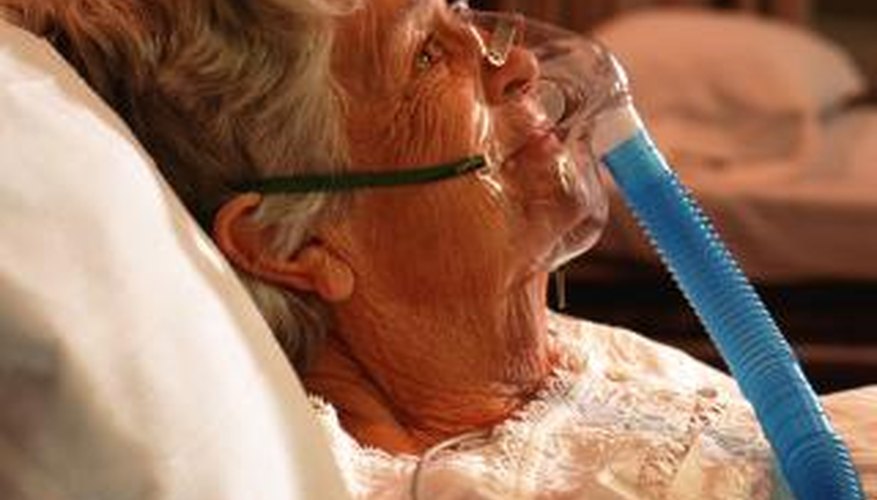If you have breathing problems, supplemental oxygen is an important part of your medical plan. Whether you are on oxygen temporarily or everyday, how much oxygen you get is vital to your well-being. Your doctor calculates how much oxygen you need in percentages. Those percentages correlate to the number on the oxygen dial, called a flow meter. The number on the dial is called the litre flow. Your litre flow will vary with different types of oxygen tubes. Your health care providers are trained in monitoring your oxygen litre flow. Regardless of what type of oxygen tube you use, knowing how many litres you need is important to your health.
- If you have breathing problems, supplemental oxygen is an important part of your medical plan.
- Whether you are on oxygen temporarily or everyday, how much oxygen you get is vital to your well-being.
Inspect the type of oxygen that is being used. Even if the litre flow number is the same, different types of oxygen systems will deliver different amounts of oxygen. This is why it is important for you to understand what the litre flow number means when it is attached to each type of oxygen set-up.
Note that when a nasal cannula is used for oxygen, the litre flow number will be set between 1 and 6 litres. When the dial is set at 1 litre, 24 per cent oxygen is being delivered. For each increase in the number on the flow meter dial, the amount of oxygen delivered increases by 4 per cent. If the flow meter is set at 2 litres, the oxygen delivered goes up to 28 per cent. The highest level of litres allowed is 6 and delivers 44 per cent oxygen.
- Inspect the type of oxygen that is being used.
- For each increase in the number on the flow meter dial, the amount of oxygen delivered increases by 4 per cent.
Recognise that when a simple face mask is used, the percentage of oxygen delivered is an estimate. The flow meter should be set between 5 and 12 litres. The amount of oxygen delivered will be 40 to 60 per cent. The flow meter should never be set less than 5 litres with this type of mask.
- Recognise that when a simple face mask is used, the percentage of oxygen delivered is an estimate.
- The flow meter should be set between 5 and 12 litres.
Observe that a partial rebreather oxygen mask will deliver 35 to 60 per cent of oxygen. The flow meter will be set between 8 and 15 litres. The flow meter should never set below 8 litres. The litre flow is based on your observation of the reservoir bag. The bag must be kept half inflated. You will need to increase the litre flow if the bag is not inflated enough.
Notice that a non-rebreather oxygen mask looks similar to a rebreather mask. You will set your litre flow dial between 8 and 15 litres. This type of mask will deliver 60 to 90 per cent of oxygen to your patient. The attached reservoir bag must always be about half full. You may need to increase the litre flow to keep the bag inflated. Never decrease the litre flow to less than 8 litres.
- Notice that a non-rebreather oxygen mask looks similar to a rebreather mask.
- You may need to increase the litre flow to keep the bag inflated.
Determine if your patient is using a venti mask for oxygen delivery. This type of mask is always set at 15 litres on the flow meter. The mask has changeable plastic pieces, in a variety of colours. Each colour signifies a different percentage of oxygen delivery. Venti masks, also called variable or Venturi masks, are capable of delivering between 24 and 50 per cent of oxygen. The litre flow does not change the amount of oxygen delivered. You must always change the plastic adaptor to do that.
WARNING
Never increase or decrease oxygen without your doctor's permission. Not adhering to facility protocols for litre flow amounts can cause dangerous levels of CO2 to build up inside oxygen face masks.
